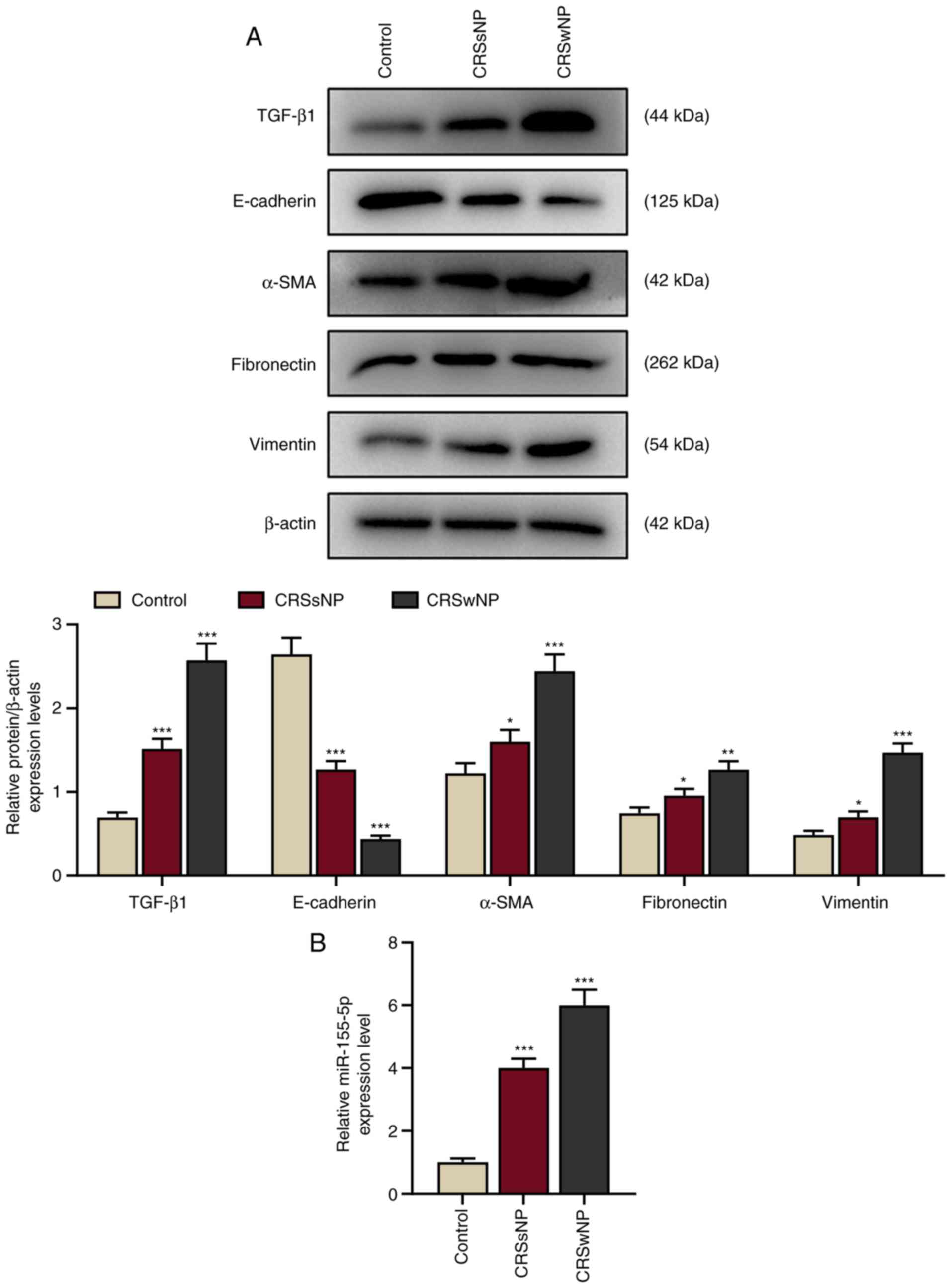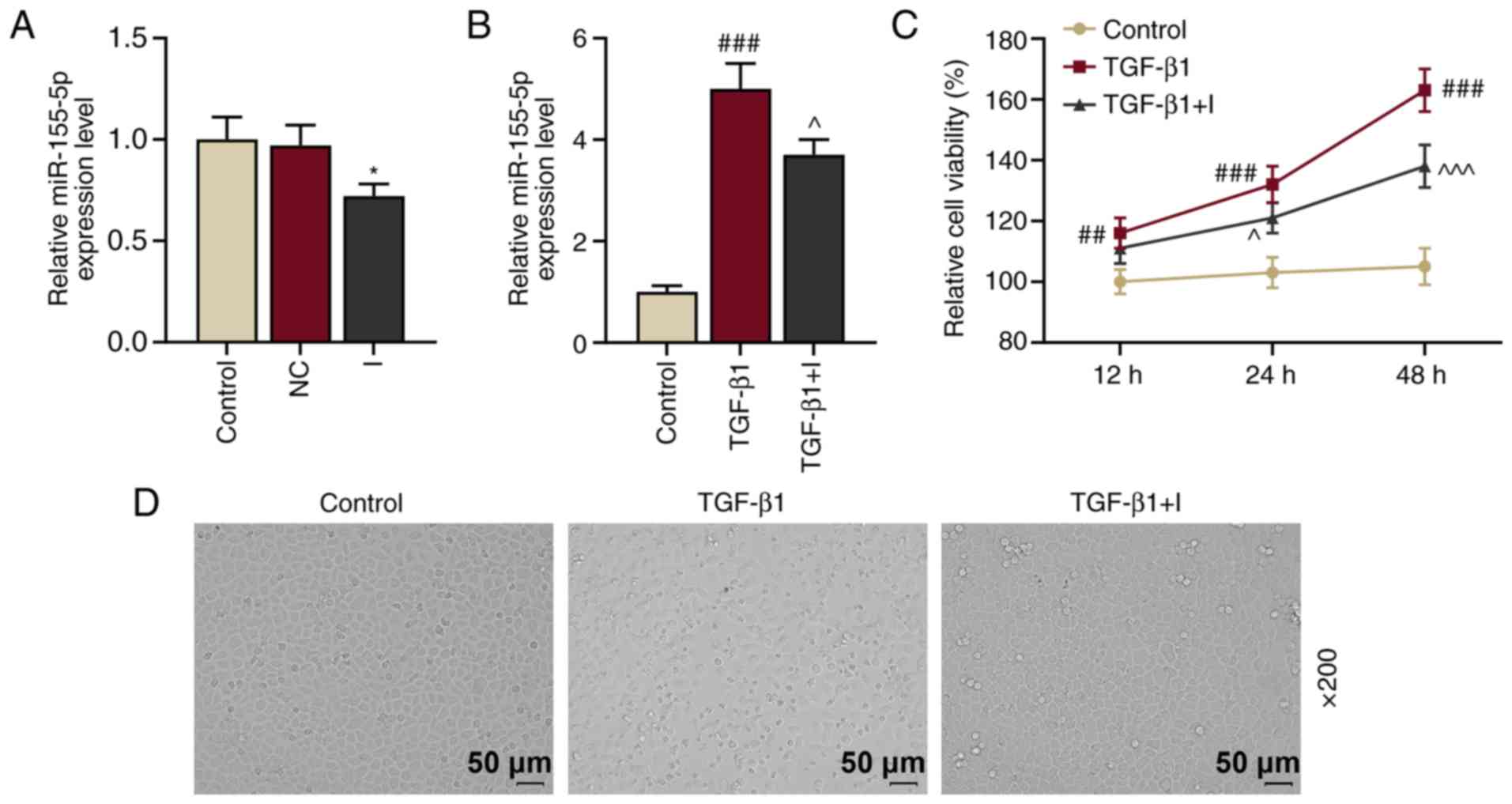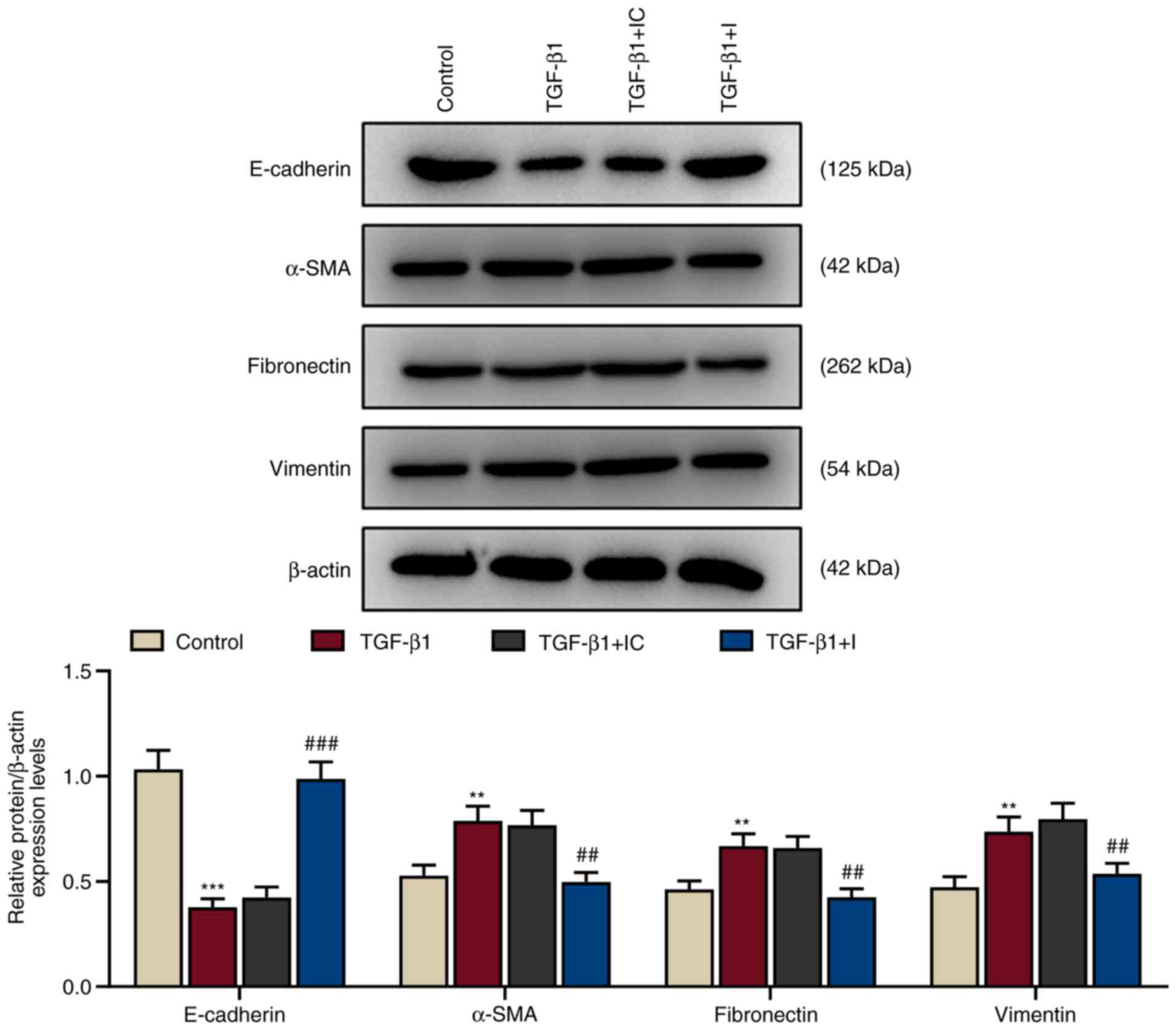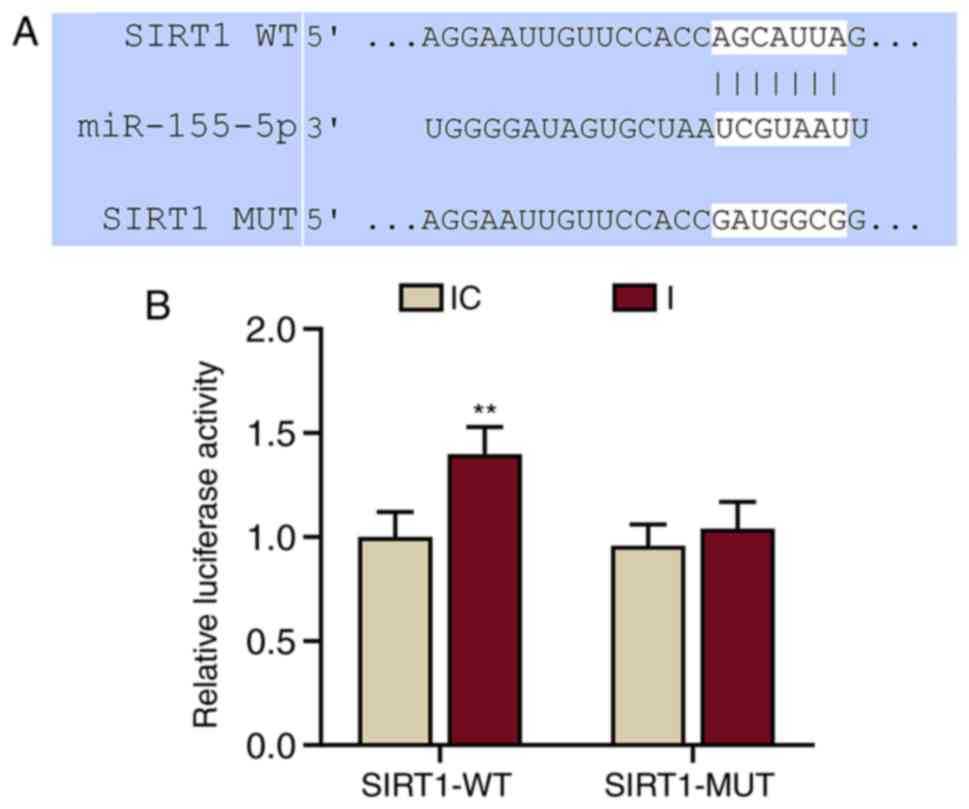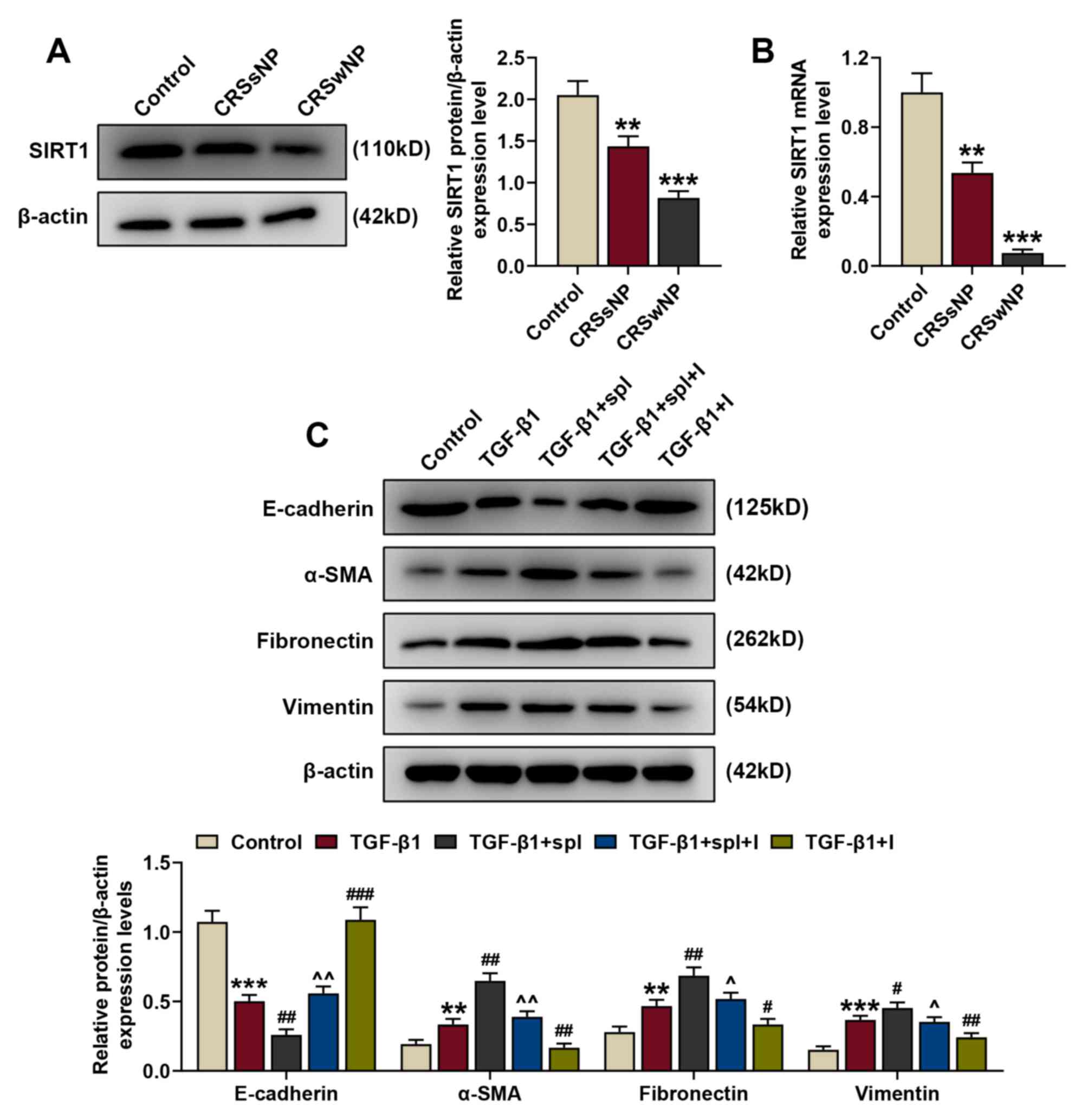|
1
|
Schleimer RP: Immunopathogenesis of
chronic rhinosinusitis and nasal polyposis. Annu Rev Pathol.
12:331–357. 2017. View Article : Google Scholar : PubMed/NCBI
|
|
2
|
Lee S and Lane AP: Chronic rhinosinusitis
as a multifactorial inflammatory disorder. Curr Infect Dis Rep.
13:159–168. 2011. View Article : Google Scholar : PubMed/NCBI
|
|
3
|
Savovic S, Buljcik-Cupic M, Jovancevic L,
Kljajic V, Lemajic-Komazec S and Dragicevic D: Frequency and
intensity of symptoms in patients with chronic rhinosinusitis.
Srpski Arhiv Za Celokupno Lekarstvo. 147:132018.
|
|
4
|
Hull BP and Chandra RK: Refractory chronic
rhinosinusitis with nasal polyposis. Otolaryngol Clin North Am.
50:61–81. 2017. View Article : Google Scholar : PubMed/NCBI
|
|
5
|
Fokkens WJ, Lund VJ, Mullol J, Bachert C,
Alobid I, Baroody F, Cohen N, Cervin A, Douglas R, Gevaert P, et
al: European position paper on rhinosinusitis and nasal polyps
2012. Rhinol Suppl. 23:32012.PubMed/NCBI
|
|
6
|
Piromchai P, Kasemsiri P, Laohasiriwong S
and Thanaviratananich S: Chronic rhinosinusitis and emerging
treatment options. Int J Gen Med. 6:453–464. 2013. View Article : Google Scholar : PubMed/NCBI
|
|
7
|
Koskinen A, Numminen J, Markkola A,
Karjalainen J, Karstila T, Seppälä M, Julkunen A, Lemmetyinen R,
Pekkanen J, Rautiainen M, et al: Diagnostic accuracy of symptoms,
endoscopy, and imaging signs of chronic rhinosinusitis without
nasal polyps compared to allergic rhinitis. Am J Rhinol Allergy.
32:121–131. 2018. View Article : Google Scholar : PubMed/NCBI
|
|
8
|
Li L, Feng J, Zhang D, Yong J, Wang Y, Yao
J and Huang R: Differential expression of miR-4492 and IL-10 is
involved in chronic rhinosinusitis with nasal polyps. Exp Ther Med.
18:3968–3976. 2019.PubMed/NCBI
|
|
9
|
Konnecke M, Burmeister M, Pries R, Boscke
R, Bruchhage KL, Ungefroren H, Klimek L and Wollenberg B:
Epithelial-mesenchymal transition in chronic rhinosinusitis:
Differences revealed between epithelial cells from nasal polyps and
inferior turbinates. Arch Immunol Ther Exp (Warsz). 65:157–173.
2017. View Article : Google Scholar : PubMed/NCBI
|
|
10
|
Lu TX and Rothenberg ME: MicroRNA. J
Allergy Clin Immunol. 141:1202–1207. 2018. View Article : Google Scholar : PubMed/NCBI
|
|
11
|
Qing X, Zhang Y, Peng Y, He G, Liu A and
Liu H: miR-142-3p regulates inflammatory response by contributing
to increased TNF-α in chronic rhinosinusitis with nasal polyposis.
Ear Nose Throat J. 9:1455613198479722019.
|
|
12
|
Lu C, Chen B, Chen C, Li H, Wang D, Tan Y
and Weng H: CircNr1h4 regulates the pathological process of renal
injury in salt-sensitive hypertensive mice by targeting miR-155-5p.
J Cell Mol Med. 24:1700–1712. 2019. View Article : Google Scholar : PubMed/NCBI
|
|
13
|
Zhao L, Ouyang Y, Bai Y, Gong J and Liao
H: miR-155-5p inhibits the viability of vascular smooth muscle cell
via targeting FOS and ZIC3 to promote aneurysm formation. Eur J
Pharmacol. 853:145–152. 2019. View Article : Google Scholar : PubMed/NCBI
|
|
14
|
Thwin M, Weitzel EK, McMains KC,
Athanasiadis T, Psaltis A, Field J and Wormald PJ: Validating the
use of report-derived lund-macKay scores. Am J Rhinol Allergy.
23:33–35. 2009. View Article : Google Scholar : PubMed/NCBI
|
|
15
|
Lund VJ and Kennedy DW: Quantification for
staging sinusitis. The staging and therapy group. Ann Otol Rhinol
Laryngol Suppl. 167:17–21. 1995. View Article : Google Scholar : PubMed/NCBI
|
|
16
|
Linder A: Symptom scores as measures of
the severity of rhinitis. Clin Allergy. 18:29–37. 1988. View Article : Google Scholar : PubMed/NCBI
|
|
17
|
Li X, Li C, Zhu G, Yuan W and Xiao ZA:
TGF-β1 induces epithelial-mesenchymal transition of chronic
sinusitis with nasal polyps through MicroRNA-21. Int Arch Allergy
Immunol. 179:304–319. 2019. View Article : Google Scholar : PubMed/NCBI
|
|
18
|
Livak KJ and Schmittgen TD: Analysis of
relative gene expression data using real-time quantitative PCR and
the 2(-Delta Delta C(T)) method. Methods. 25:402–408. 2001.
View Article : Google Scholar : PubMed/NCBI
|
|
19
|
Liu F, Kong X, Lv L and Gao J: TGF-β1 acts
through miR-155 to down-regulate TP53INP1 in promoting
epithelial-mesenchymal transition and cancer stem cell phenotypes.
Cancer Lett. 359:288–298. 2015. View Article : Google Scholar : PubMed/NCBI
|
|
20
|
Park IH, Kang JH, Shin JM and Lee HM:
Trichostatin A inhibits epithelial mesenchymal transition induced
by TGF-β1 in airway epithelium. PLoS One. 11:e01620582016.
View Article : Google Scholar : PubMed/NCBI
|
|
21
|
Chaffer CL, San Juan BP, Lim E and
Weinberg RA: EMT, cell plasticity and metastasis. Cancer Metastasis
Rev. 35:645–654. 2016. View Article : Google Scholar : PubMed/NCBI
|
|
22
|
Ma Z, Shen Y, Zeng Q, Liu J, Yang L, Fu R
and Hu G: MiR-150-5p regulates EGR2 to promote the development of
chronic rhinosinusitis via the DC-Th axis. Int Immunopharmacol.
54:188–197. 2018. View Article : Google Scholar : PubMed/NCBI
|
|
23
|
Wu ZW, Liu YF, Wang S and Li B: miRNA-146a
induces vascular smooth muscle cell apoptosis in a rat model of
coronary heart disease via NF-κB pathway. Genet Mol Res.
14:18703–18712. 2015. View Article : Google Scholar : PubMed/NCBI
|
|
24
|
Canfrán-Duque A, Rotllan N, Zhang X,
Fernández-Fuertes M, Ramírez-Hidalgo C, Araldi E, Daimiel L, Busto
R, Fernández-Hernando C and Suárez Y: Macrophage deficiency of
miR-21 promotes apoptosis, plaque necrosis, and vascular
inflammation during atherogenesis. EMBO Mol Med. 9:1244–1262. 2017.
View Article : Google Scholar : PubMed/NCBI
|
|
25
|
Al-Haidari AA, Syk I and Thorlacius H:
miR-155-5p positively regulates CCL17-induced colon cancer cell
migration by targeting rhoA. Oncotarget. 8:14887–14896. 2017.
View Article : Google Scholar : PubMed/NCBI
|
|
26
|
Li DP, Fan J, Wu YJ, Xie YF, Zha JM and
Zhou XM: MiR-155 up-regulated by TGF-β promotes
epithelial-mesenchymal transition, invasion and metastasis of human
hepatocellular carcinoma cells in vitro. Am J Transl Res.
9:2956–2965. 2017.PubMed/NCBI
|
|
27
|
Zhao H, Zhang J, Shao H, Liu J, Jin M,
Chen J and Huang Y: Transforming growth factor β1/Smad4 signaling
affects osteoclast differentiation via regulation of miR-155
expression. Mol Cells. 40:211–221. 2017.PubMed/NCBI
|
|
28
|
Koennecke M, Benecke F, Masche A, Linke R,
Bruchhage KL, Pries R, Klimek L and Wollenberg B: Increased
phosphorylation of eNOS in nasal polyps of chronic rhinosinusitis
patients can be diminished by 1,8-cineol. Nitric Oxide. 78:89–94.
2018. View Article : Google Scholar : PubMed/NCBI
|
|
29
|
DeConde AS and Soler ZM: Chronic
rhinosinusitis: Epidemiology and burden of disease. Am J Rhinol
Allergy. 30:134–139. 2016. View Article : Google Scholar : PubMed/NCBI
|
|
30
|
Hupin C, Gohy S, Bouzin C, Lecocq M,
Polette M and Pilette C: Features of mesenchymal transition in the
airway epithelium from chronic rhinosinusitis. Allergy.
69:1540–1549. 2014. View Article : Google Scholar : PubMed/NCBI
|
|
31
|
Lee HM, Kang JH, Shin JM, Lee SA and Park
IH: Chemical chaperone of endoplasmic reticulum stress inhibits
epithelial-mesenchymal transition induced by TGF-β1 in airway
epithelium via the c-src pathway. Mediators Inflamm.
2017:81232812017. View Article : Google Scholar : PubMed/NCBI
|
|
32
|
Pu Y, Liu Y, Liao S, Miao S, Zhou L and
Wan L: Azithromycin ameliorates OVA-induced airway remodeling in
Balb/c mice via suppression of epithelial-to-mesenchymal
transition. Int Immunopharmacol. 58:87–93. 2018. View Article : Google Scholar : PubMed/NCBI
|
|
33
|
Hirota N and Martin JG: Mechanisms of
airway remodeling. Chest. 144:1026–1032. 2013. View Article : Google Scholar : PubMed/NCBI
|
|
34
|
Tian X, Tian X, Huo R, Chang Q, Zheng G,
Du Y, Chen Y and Niu B: Bacillus calmette-guerin alleviates airway
inflammation and remodeling by preventing TGF-β1 induced
epithelial-mesenchymal transition. Hum Vaccin Immunother.
13:1758–1764. 2017. View Article : Google Scholar : PubMed/NCBI
|
|
35
|
Cruz-Solbes AS and Youker K: Epithelial to
mesenchymal transition (EMT) and endothelial to mesenchymal
transition (EndMT): Role and implications in kidney fibrosis.
Results Probl Cell Differ. 60:345–372. 2017. View Article : Google Scholar : PubMed/NCBI
|
|
36
|
Title AC, Hong SJ, Pires ND, Hasenöhrl L,
Godbersen S, Stokar-Regenscheit N, Bartel DP and Stoffel M: Genetic
dissection of the miR-200-Zeb1 axis reveals its importance in tumor
differentiation and invasion. Nat Commun. 9:46712018. View Article : Google Scholar : PubMed/NCBI
|
|
37
|
Lu L, Zhu J, Zhang Y, Wang Y, Zhang S and
Xia A: Febuxostat inhibits TGF-β1-induced epithelial-mesenchymal
transition via downregulation of USAG-1 expression in madin-darby
canine kidney cells in vitro. Mol Med Rep. 19:1694–1704.
2019.PubMed/NCBI
|
|
38
|
Sisto M, Lisi S and Ribatti D: The role of
the epithelial-to-mesenchymal transition (EMT) in diseases of the
salivary glands. Histochem Cell Biol. 150:133–147. 2018. View Article : Google Scholar : PubMed/NCBI
|
|
39
|
Khalmuratova R, Park JW and Shin HW:
Immune cell responses and mucosal barrier disruptions in chronic
rhinosinusitis. Immune Netw. 17:60–67. 2017. View Article : Google Scholar : PubMed/NCBI
|
|
40
|
Chen L, Xiao L, Liu J, Shen Y, Ke X, Huang
J, Hu G and Yang Y: Differential expression of the aryl hydrocarbon
receptor and transforming growth factor beta 1 in chronic
rhinosinusitis with nasal polyps with allergic rhinitis. ORL J
Otorhinolaryngol Relat Spec. 79:295–305. 2017. View Article : Google Scholar : PubMed/NCBI
|
|
41
|
Kim SI and Choi ME: TGF-β-activated
kinase-1: New insights into the mechanism of TGF-β signaling and
kidney disease. Kidney Res Clin Pract. 31:94–105. 2012. View Article : Google Scholar : PubMed/NCBI
|
|
42
|
Mahmood MQ, Reid D, Ward C, Muller HK,
Knight DA, Sohal SS and Walters EH: Transforming growth factor
(TGF) β1 and Smad signalling pathways: A likely key to
EMT-associated COPD pathogenesis. Respirology. 22:133–140. 2017.
View Article : Google Scholar : PubMed/NCBI
|
|
43
|
Ryu NH, Shin JM, Um JY, Park IH and Lee
HM: Wogonin inhibits transforming growth factor β1-induced
extracellular matrix production via the p38/activator protein 1
signaling pathway in nasal polyp-derived fibroblasts. Am J Rhinol
Allergy. 30:128–133. 2016. View Article : Google Scholar : PubMed/NCBI
|
|
44
|
Zhao XS, Han B, Zhao JX, Tao N and Dong
CY: miR-155-5p affects wilms' tumor cell proliferation and
apoptosis via targeting CREB1. Eur Rev Med Pharmacol Sci.
23:1030–1037. 2019.PubMed/NCBI
|
|
45
|
Wang Y, Zheng ZJ, Jia YJ, Yang YL and Xue
YM: Role of p53/miR-155-5p/sirt1 loop in renal tubular injury of
diabetic kidney disease. J Transl Med. 16:1462018. View Article : Google Scholar : PubMed/NCBI
|
|
46
|
Zhang D, Cui Y, Li B, Luo X, Li B and Tang
Y: miR-155 regulates high glucose-induced cardiac fibrosis via the
TGF-β signaling pathway. Mol Biosyst. 13:215–224. 2016. View Article : Google Scholar : PubMed/NCBI
|
|
47
|
Wang J, He W, Xu X, Guo L, Zhang Y, Han S
and Shen D: The mechanism of TGF-β/miR-155/c-Ski regulates
endothelial-mesenchymal transition in human coronary artery
endothelial cells. Biosci Rep. 37:BSR201606032017. View Article : Google Scholar : PubMed/NCBI
|
|
48
|
Lee M, Kim DW, Yoon H, So D, Khalmuratova
R, Rhee CS, Park JW and Shin HW: Sirtuin 1 attenuates nasal
polypogenesis by suppressing epithelial-to-mesenchymal transition.
J Allergy Clin Immunol. 137:87–98. 2016. View Article : Google Scholar : PubMed/NCBI
|
|
49
|
Huang G, Hao F and Hu X: Downregulation of
microRNA-155 stimulates sevoflurane-mediated cardioprotection
against myocardial ischemia/reperfusion injury by binding to SIRT1
in mice. J Cell Biochem. 120:15494–15505. 2019. View Article : Google Scholar : PubMed/NCBI
|















